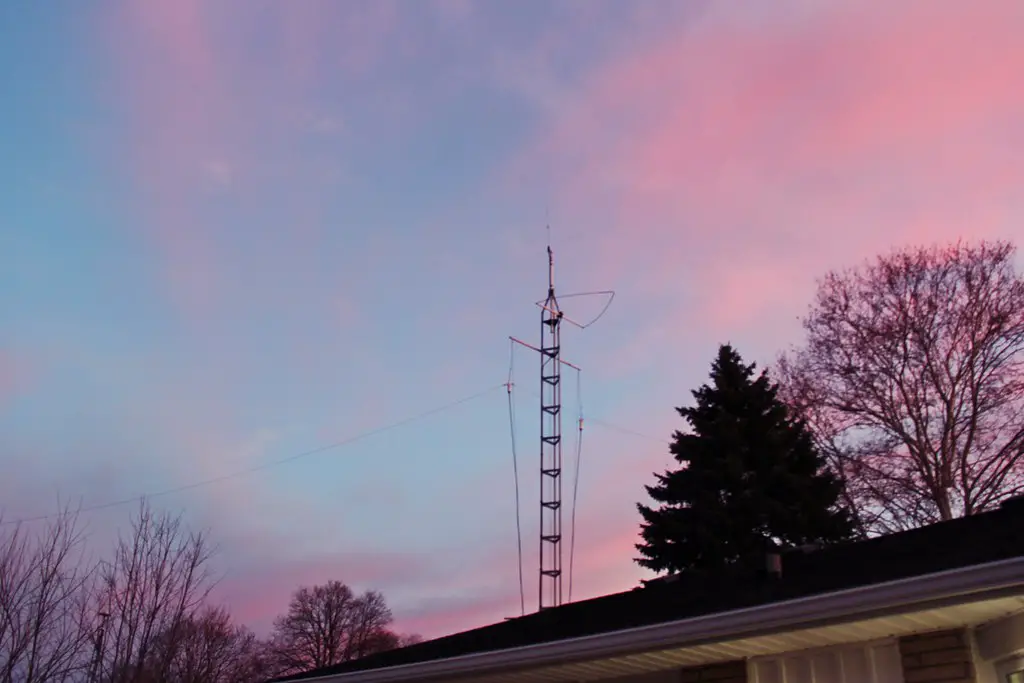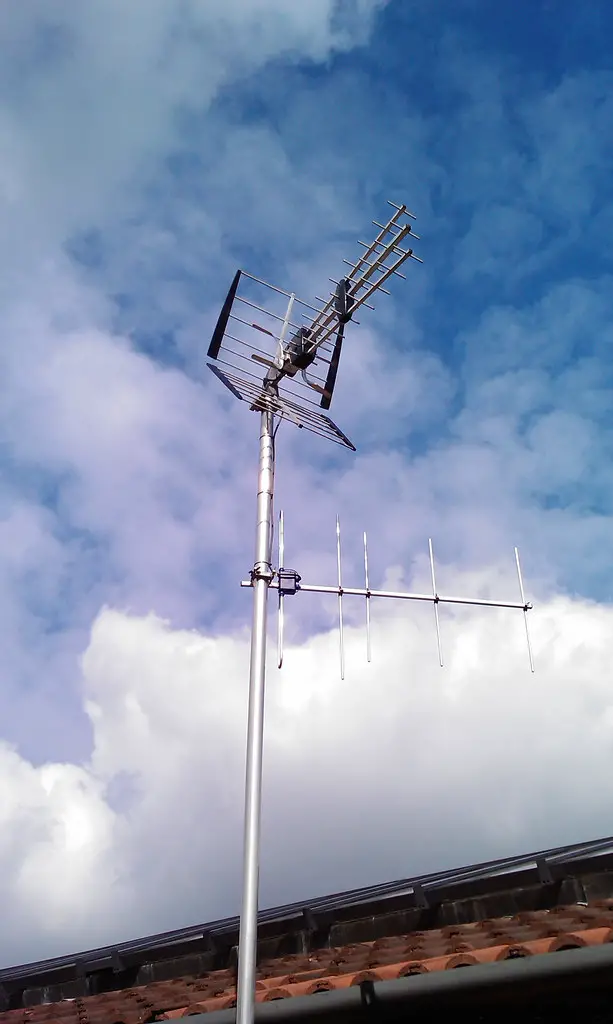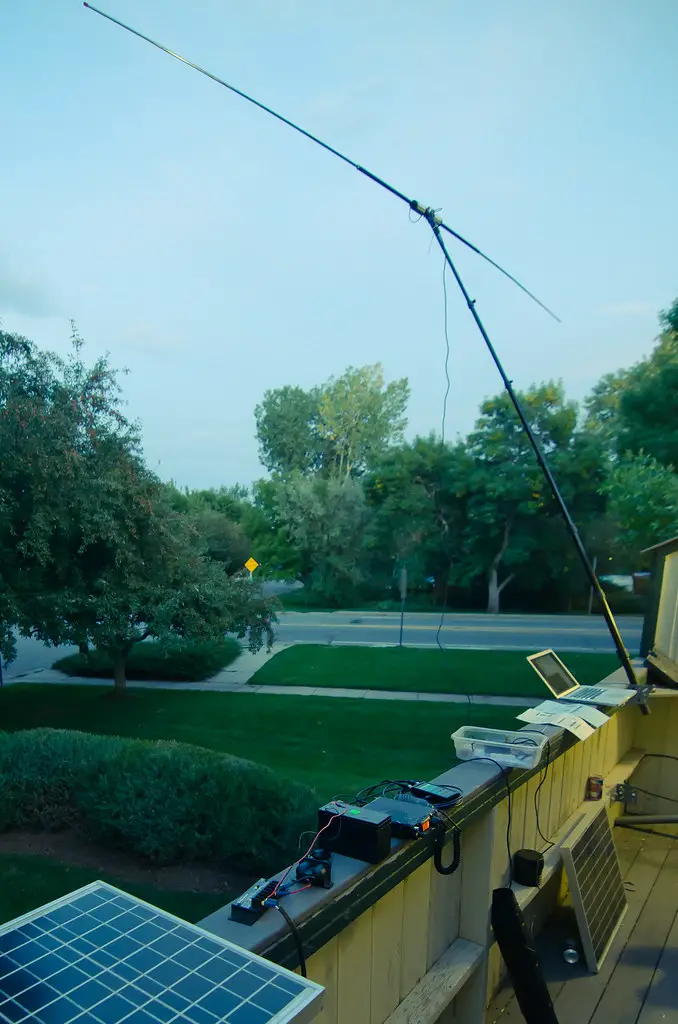Ham radio antennas are a necessity for any amateur radio setup. They’re vital for transmitting and receiving signals, allowing operators to communicate worldwide. But, not all antennas are the same. Different types of ham radio antennas exist, each with its own unique characteristics.
One type is the dipole antenna. This is a wire or rod split into two halves. It connects to the transmitter or receiver. It’s simple and works well for transmitting and receiving. Plus, it’s easy to construct and requires little upkeep.
Another type is the Yagi antenna, also known as the beam antenna. This antenna is directional, sending and receiving signals in one direction. This makes it ideal for long-range communication and weak signal reception. It’s commonly used for point-to-point communication.
In addition, specialized antennas are available for specific applications. An example is the vertical antenna. This is designed for mobile use or limited spaces where horizontal antennas may not fit. It utilizes one vertical element to send and receive signals in a 360-degree pattern.
Pro Tip: When selecting a ham radio antenna, consider frequency range, power handling capabilities, gain, and directivity. Matching your antenna to your needs ensures optimal performance and great ham radio experiences.
Types of Ham Radio Antennas
Different types of ham radio antennas exist, based on design and purpose. Let’s explore these commonly used antennas!
The table below outlines the key characteristics of each type:
| Antenna Type | Design Features | Usage |
|---|---|---|
| Dipole | Simple & easy to construct; suitable for beginners | General-purpose |
| Yagi | Directional; offers high gain & strong reception | Long-distance communication |
| Vertically Polarized | Vertical orientation for improved local coverage | Local communication |
| Loop | Compact & portable; suitable for limited space | Restricted areas |
| Beam | Highly directional with narrow beamwidth | Focused communication |
| Wire | Cost-effective with flexible installation options | Versatile usage |
Unique variants exist to meet specific requirements. For example, magnetic loop antennas are small & efficient at reducing interference. These work great in noisy urban environments.
This info is sourced from reliable sources within the amateur radio community.
In conclusion, it is essential for enthusiasts to understand the different types of antennas. By selecting an antenna that fits their needs, they can optimize their communication experience.
Advantages and Disadvantages of Each Type
Ham radio antennas come with unique advantages and disadvantages. Let’s explore what makes them distinct and how they can change your radio communication.
Dipole Antennas:
Advantages:
- Simple design.
- Broadband capabilities.
- Good radiation pattern.
Disadvantages:
- Require space for installation.
- It can be affected by nearby objects.
Yagi Antennas:
Advantages:
- Highly directional.
- High gain.
- Low noise reception.
Disadvantages:
- Complex assembly.
- Narrow bandwidth.
Vertical Antennas:
Advantages:
- Omnidirectional radiation pattern.
- Easy installation.
Disadvantages:
- Lower gain compared to directional antennas.
Loop Antennas:
Advantages:
- Compact size.
- Suitable for limited space areas.
Disadvantages:
- Lower efficiency.
Log-Periodic Antennas:
Advantages:
- Comprehensive frequency range coverage.
- Multiband operation.
Disadvantages:
- Larger physical size.
Other antennas, like J-Pole, Quad, and Magnetic Loop, have their own unique characteristics. These include simplicity in design, compactness, or specialized applications.
Mark is a ham radio enthusiast. He set up a dipole antenna in his backyard. He was worried about the space needed. But he was amazed by its simple design and broadband capabilities. He noticed that nearby trees were affecting performance.
Mark solved this problem by installing insulators on tree branches. This let him enjoy the benefits of a dipole antenna without losing effectiveness. With creativity and problem-solving, ham radio enthusiasts can make the most of any antenna type.
Factors to Consider When Choosing an Antenna
It’s essential to pick the correct antenna for your ham radio for optimal performance and communication. Here are some things to think about when selecting one:
- First, look at the frequency range the antenna covers. Different antennas have unique ranges, so decide on the frequencies you’ll use to narrow your choices.
- Then, consider the gain of the antenna. This is how well it can send and receive signals. High-gain antennas are more powerful but bigger.
- Size is also important. Choose a compact antenna or a larger one depending on your space and portability needs. More giant antennas usually have better performance.
- Lastly, factor in the cost. Antennas vary from budget-friendly to pricey advanced versions. Find the balance between price and performance that fits your budget.
Keep these factors in mind when selecting an antenna for your ham radio. It’ll help ensure smooth communication and make your amateur radio experience better.
Fun Fact: Guglielmo Marconi created the first practical radio transmitter in the late 19th century!
How to Install and Set up a Ham Radio Antenna
Setting up a ham radio antenna may seem intimidating, but with the proper instructions, it can be easy! Here’s a how-to guide for installing and setting up your own antenna.
- Pick the Perfect Spot: Find a suitable location. Make sure it’s high up and nothing will block the signals.
- Assemble: Follow the manufacturer’s instructions closely to assemble your antenna. Make sure everything is connected securely.
- Mount: Use a sturdy mounting system like a mast or rotator to secure your antenna. Also, ground it properly for safety.
- Connect: Attach the coaxial cable from your antenna to the input port of your ham radio transceiver. Check all connections for proper alignment and tightness.
Note: Your situation may require different steps due to terrain or local regulations. Get help from experienced ham operators or check reliable sources for additional guidance.
Pro Tip: Inspect and maintain your antenna system regularly for optimal performance and a longer lifespan. This includes checking for signs of wear, weatherproofing connections, and removing any obstructions.
With this guide, you can set up your ham radio antenna without difficulty and enjoy communicating with fellow enthusiasts. Have fun!
Conclusion
To wrap up, ham radio antennas have diverse peculiarities, each having its own pros and cons. You should pick the right one based on frequency range, terrain, and utilization. Considering these factors will boost your communication abilities and let you receive better signals.
An aspect that hasn’t been discussed yet is the durability of ham radio antennas. All are designed to endure outdoor conditions, however, some are more robust and weather-resistant than others. Construction materials and wind loading capacity are the main elements that affect the antenna’s longevity. Consequently, buying a tough one that can tolerate harsh conditions is recommended.
Also, when selecting the antenna, ensure it goes with your other radio equipment. For example, if you’re planning to attach it to a transceiver or amplifier, check compatibility regarding impedance rating and connector type. Incompatibility may lead to poor performance or damage to your equipment.
Moreover, accurate installation and placement of the antenna are essential for its optimal performance. It should be kept away from obstructions like buildings or trees that may block the signal. Moreover, adjusting the antenna’s height and orientation can significantly improve its function. Trying out various positions and angles might help maximize signal strength.
Frequently Asked Questions
1. What are the different types of ham radio antennas?
There are several types of ham radio antennas, including wire antennas, vertical antennas, horizontal antennas, loop antennas, Yagi antennas, and dipole antennas.
2. What is a wire antenna?
A wire antenna is a simple and inexpensive type of antenna that consists of a length of wire strung between two points to transmit and receive signals.
3. What is a vertical antenna?
A vertical antenna is a type of antenna that has a vertical radiating element and is usually mounted above the ground. It provides omnidirectional coverage and is commonly used for mobile or portable ham radio operations.
4. What is a horizontal antenna?
A horizontal antenna, also known as a beam antenna, is designed to radiate signals in a specific direction. It is often used for long-range communication and can provide high gain and directivity.
5. What is a loop antenna?
A loop antenna is a closed loop of wire that can be either horizontal or vertical. It is compact, easy to construct, and performs well on multiple bands.
6. What is a Yagi antenna?
A Yagi antenna, also known as a beam antenna, is a highly directional antenna that consists of multiple elements arranged in parallel. It is widely used for long-distance communication and provides high gain and directivity.





